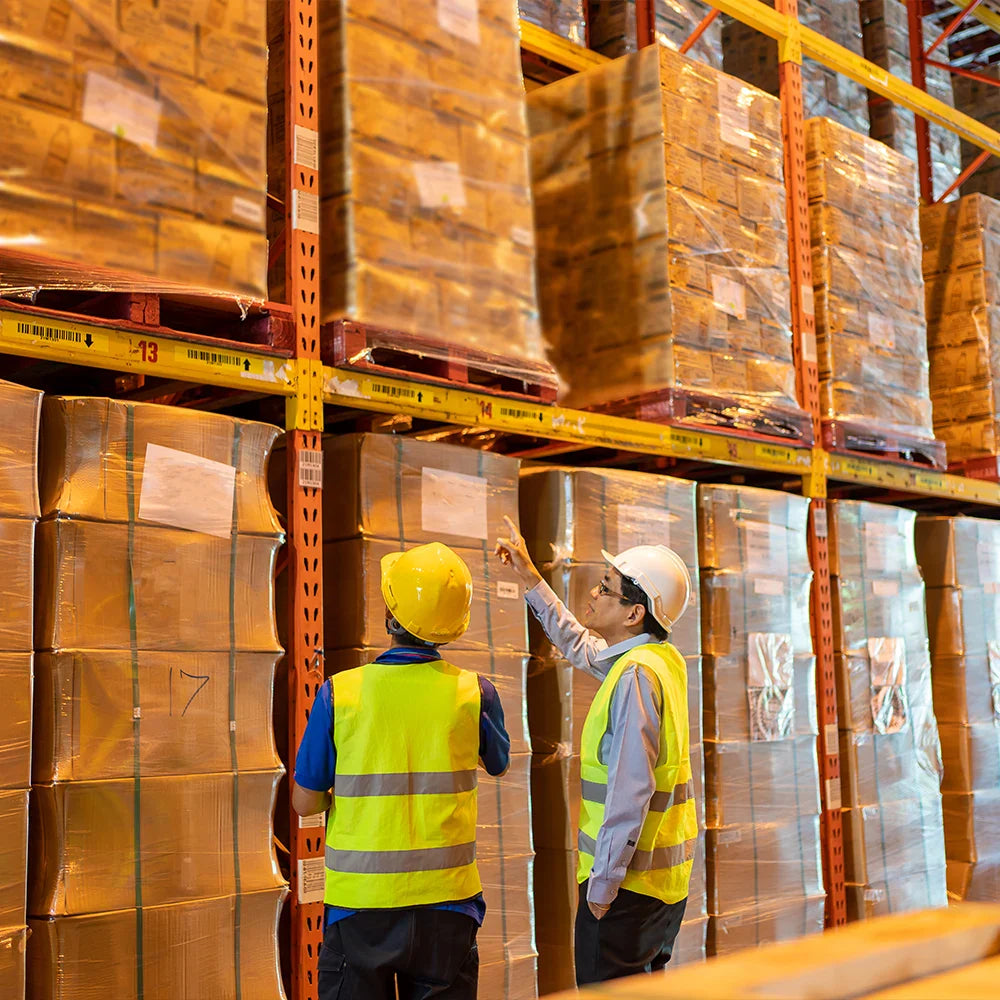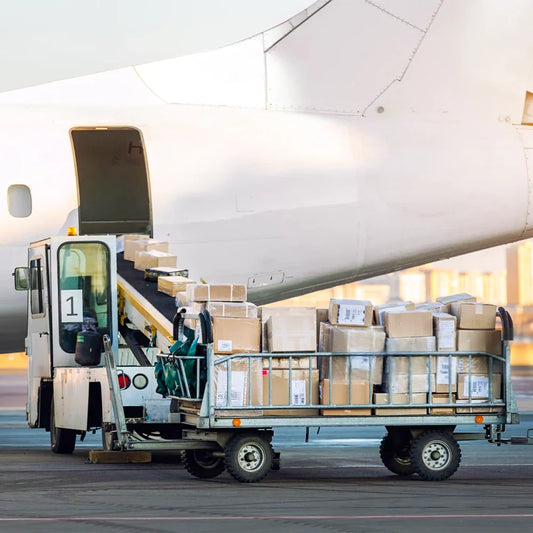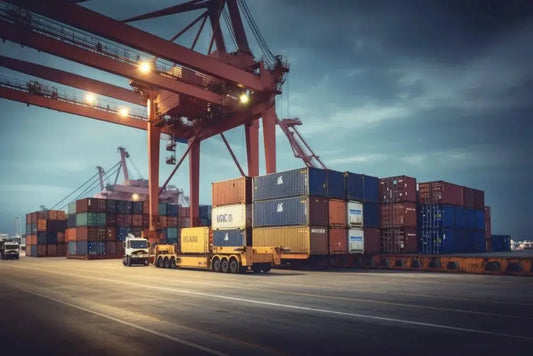كم تكلفة التخزين في دبي؟ تحليل قائم على أساس CBM

جدول المحتويات
- ما هو CBM
- CBM=الارتفاع (سم) × العرض (سم) × الطول (سم)
- CBM=الطول (م) × العرض (م) × الارتفاع (م)
- متوسط أسعار التخزين لكل متر مكعب في دبي
- ما الذي يشمل تكاليف التخزين (وما الذي لا يشملها)؟
- اختيار المستودع المناسب لنوع البضائع الخاصة بك
يُعد التخزين جزءًا أساسيًا من أي سلسلة توريد، وفي مركز لوجستي كدبي، يُمكن لفهم تكاليف التخزين أن يُحدث فرقًا كبيرًا في ربحيتك. إذا كنت تاجرًا أو مستوردًا أو شركة تجارة إلكترونية، فإن معرفة كيفية حساب رسوم التخزين تُساعدك على التخطيط بكفاءة أكبر وتجنب التكاليف غير المتوقعة. في هذه المقالة، سنُفصّل التكاليف النموذجية للتخزين في دبي، ونشرح ما يشمله التسعير القائم على تكلفة التخزين (CBM)، ونُسلّط الضوء على العوامل الرئيسية التي تؤثر على إجمالي فاتورة التخزين الخاصة بك.
ما هو CBM
المتر المكعب (CBM) هو وحدة قياس تُمثل الحجم الذي تشغله الحمولة. يُساعدنا المتر المكعب على تصوّر كمية المنتج التي يُمكن نقلها بكفاءة، مما يُسهّل تنظيم الحمولات الكاملة وتحسين الموارد المتاحة.
كيفية حساب CBM للحمل
حساب حجم الحمولة (CBM) سهل نسبيًا، ولكنه يتطلب دقة في القياس. لتحديد حجم أي شحنة بالمتر المكعب، يكفي قياس ارتفاع وعرض وعمق الحمولة بالأمتار، ثم ضرب هذه الأرقام الثلاثة.
صيغة:
CBM=الارتفاع (سم) × العرض (سم) × الطول (سم )
على سبيل المثال، إذا كان لديك صندوق بأبعاد 60 سم ارتفاعًا و50 سم عرضًا و80 سم طولًا
الحساب سيكون:
الصيغة 1: 0.60 × 0.50 × 0.80 = 0.24 متر مكعب في المليون
الصيغة 2: 60 × 50 × 80 / 1,000,000 = 0.24 متر مكعب في المليون
إذا كانت أبعادك بالأمتار، إذن:
CBM=الطول (م) × العرض (م) × الارتفاع (م )
إذا كان لديك صندوق بأبعاد 1.2 متر ارتفاعًا و1.8 متر عرضًا و2 متر طولًا، فإن CBM سيكون مساويًا لـ:
1.2 × 1.8 × 2 = 4.32 متر مكعب
ومن الأهمية بمكان إجراء هذه القياسات بعناية لضمان دقة حساب مساحة البناء الإجمالية، حيث أن أي أخطاء قد تؤدي إلى تقديرات غير صحيحة للمساحة المطلوبة للنقل وبالتالي زيادة تكاليف الخدمات اللوجستية.
يتم استخدام معدل التكلفة لكل متر مكعب في العادة لتحديد تكلفة نقل البضائع عن طريق البحر، حيث يسمح بتقدير أكثر دقة لكمية المساحة التي ستشغلها البضائع في عنبر السفينة.
متوسط أسعار التخزين لكل متر مكعب في دبي
عند الحديث عن التخزين في دبي، تُحدد معظم شركات التخزين أسعارها بناءً على الحجم، والذي يُحسب عادةً بالمتر المكعب (CBM). يوفر نموذج التسعير هذا طريقة عادلة وقابلة للتطوير لإدارة تكاليف التخزين، خاصةً للشركات التي تتعامل مع أحجام منتجات متنوعة. يساعدك فهم متوسط أسعار التخزين لكل متر مكعب على تقدير نفقات التخزين بدقة واختيار المنشأة المناسبة لميزانيتك واحتياجاتك التشغيلية. دعونا نلقي نظرة فاحصة على التكلفة المتوقعة للتخزين لكل متر مكعب في دبي.
|
سي بي إم |
السعر شهريًا، درهم إماراتي |
|
1-5 |
299 |
|
5-10 |
499 |
|
10-15 |
599 |
|
15-20 |
999 |
|
20-25 |
1399 |
|
25-30 |
1499 |
*السعر مقدم من شركتنا
بالنسبة للشركات، يوفر التخزين التجاري خططًا مرنة لتلبية احتياجاتها قصيرة وطويلة الأجل، مع خيارات آمنة وقابلة للتطوير وفعالة من حيث التكلفة. توفر هذه المرافق مراقبة على مدار الساعة طوال أيام الأسبوع وسهولة الوصول، مما يجعلها مثالية لشركات التجزئة التي تبحث عن تخزين فائض البضائع، وشركات التجارة الإلكترونية التي تدير عمليات التوزيع، والمكاتب التي تُنظّم مساحات العمل، وشركات تنظيم الفعاليات التي تخزن المعدات، والمقاولين الذين يحتاجون إلى تخزين منظم للأدوات واللوازم.
تم تصميم تخزين المكاتب لاستيعاب كل شيء بدءًا من الأثاث والإلكترونيات وحتى المستندات والملفات المؤرشفة، مما يوفر حلاً عمليًا أثناء عمليات التجديد أو الانتقال أو عند إدارة المخزون الإضافي.
في قطاع السكن، تُعدّ خيارات التخزين مثالية لمن يبحثون عن تخزين آمن لأثاث المنزل، أو الأغراض الموسمية، أو المتعلقات الشخصية، أو حتى الأغراض المؤقتة أثناء الانتقال. حتى الطلاب يمكنهم الاستفادة من الحفاظ على ممتلكاتهم آمنة خلال العطلات المدرسية.
للمسافرين، تُوفر خدمة تخزين الحقائب والأمتعة وسيلةً سهلةً لاستكشاف المدينة دون عناء، سواءً كنت سائحًا، أو محترفًا في محطة توقف، أو شخصًا يستقر في مكان جديد. وأخيرًا، تدعم خدمات النقل والتغليف العملاء السكنيين والتجاريين على حدٍ سواء من خلال النقل الآمن والتعبئة، وحتى التخزين، مما يضمن انتقالًا سلسًا في جميع أنحاء دبي أو إلى مدن أخرى في الإمارات العربية المتحدة. توفر حلول التخزين هذه الراحة والأمان والمرونة، وهي أمور أساسية للحياة الحضرية العصرية وعمليات الأعمال.
ما الذي يشمل تكاليف التخزين (وما الذي لا يشملها)؟
إن فهم تكاليف التخزين أمرٌ أساسيٌّ لوضع الميزانية والتخطيط اللوجستي الفعّال. عادةً ما تُحتسب رسوم التخزين شهريًا بناءً على حجم بضائعك بالمتر المكعب (CBM). تشمل هذه الرسوم المساحة المادية التي يستخدمها مخزونك والبيئة الآمنة، بالإضافة إلى التحكم في الوصول لضمان راحة البال.
مع ذلك، من المهم معرفة أن رسوم التخزين وحدها لا تشمل جميع الخدمات المتعلقة بمعالجة مخزونك. تُفرض رسوم منفصلة على تكاليف استلام البضائع في المنشأة، ووضع العلامات، والانتقاء والتعبئة، وتغليف المنصات، ومعالجة المرتجعات. على سبيل المثال، تُفرض رسوم خدمات خاصة على تفريغ الحاويات، ومعالجة الشحنات الواردة، وتجهيز البضائع للشحن. إذا كانت بضائعك تتطلب تغليفًا مخصصًا، أو مواد تحمل علامات تجارية، أو تغليفًا بلاستيكيًا، فإن هذه تُعتبر أيضًا خدمات إضافية خارج نطاق سعر التخزين القياسي.
علاوةً على ذلك، تُحدَّد رسوم التوصيل، سواءً للتسليم المحلي أو لمواعيد محددة، بشكلٍ منفصل بناءً على الموقع والكمية. كما تُفرض رسومٌ بنسبة مئوية صغيرة على خدمات معالجة الدفع، مثل خدمة الدفع عند الاستلام أو معاملات البطاقات. إن معرفة ما هو مشمولٌ وما هو مستثنى من تكلفة التخزين الأساسية يُتيح لك التخطيط بفعالية أكبر وتجنب المفاجآت.
اختيار المستودع المناسب لنوع البضائع الخاصة بك
ليست جميع المستودعات متساوية، وعندما يتعلق الأمر بتخزين بضائعك، فإن اختيار المنشأة المناسبة يُحدث فرقًا كبيرًا في كفاءة عملياتك وسلامة مناولة بضائعك. المستودع المثالي لا يقتصر على المساحة فحسب، بل يتعلق أيضًا بمواءمة إمكانيات المنشأة مع المتطلبات المحددة لبضائعك.
أول عامل يجب مراعاته هو طبيعة منتجاتك. هل هي هشة، سريعة التلف، حساسة للحرارة، أم عالية القيمة؟ إذا كنت تخزن إلكترونيات، أو أدوية، أو مستحضرات تجميل، فإن بيئة مُكيّفة مناخيًا ضرورية للحفاظ على سلامة المنتج.
بالنسبة للآلات الثقيلة أو مواد البناء، ستحتاج إلى مستودع بأرضيات متينة، ومعدات مناولة، وسهولة وصول المركبات. من ناحية أخرى، قد تستفيد سلع التجزئة من تخزين منظم على الرفوف وأنظمة انتقاء سريعة لتحقيق معدل دوران مرتفع.
يُعدّ الأمان عاملاً بالغ الأهمية، خاصةً للسلع الثمينة كالسلع الفاخرة والإلكترونيات والبضائع ذات العلامات التجارية. ابحث عن مستودعات مزودة بكاميرات مراقبة على مدار الساعة، وأنظمة دخول محدودة، وأنظمة إنذار. كما تُعدّ سياسات التأمين الخاصة بالمنشأة واستعدادها لاستقبال عمليات تفتيش من جهات خارجية مؤشرات مهمة على الموثوقية والشفافية.
يلعب سهولة الوصول والموقع دورًا عمليًا في ضمان تدفق شحناتك بسلاسة عبر سلسلة التوريد. يمكن أن يساعد وجود مستودع بالقرب من طرق النقل الرئيسية أو الموانئ أو المراكز الحضرية على تقليل وقت وتكلفة التسليم في المرحلة الأخيرة. إذا كان نموذج عملك يعتمد على التجارة الإلكترونية أو تلبية الطلبات بشكل متكرر، فإن القرب من شبكات البريد السريع يصبح أكثر أهمية.
لا تقل أهمية قابلية توسع المستودع ومرونته. مع نمو أعمالك، قد تزداد احتياجاتك التخزينية. اختيار منشأة قادرة على التوسع معك - سواءً من حيث المساحة أو الموظفين أو الخدمات - يوفر عليك عناء نقل أو إدارة مواقع تخزين متعددة.
أخيرًا، خصّص وقتًا لتقييم سمعة المستودع. اقرأ التقييمات، واطلب المراجعات، وزُر المنشأة إن أمكن. المستودع المُدار جيدًا يتميز بعمليات واضحة، وأسعار شفافة، وفريق عمل مُتجاوب وذو خبرة.
باختصار، أفضل مستودع لشحناتك هو المستودع الذي يفهم طبيعة بضائعك، ويدعم أهدافك اللوجستية، ويتكيف مع نموك. باختيارك الصحيح، يصبح حل التخزين لديك ميزة حقيقية، وليس مجرد مركز تكلفة.




